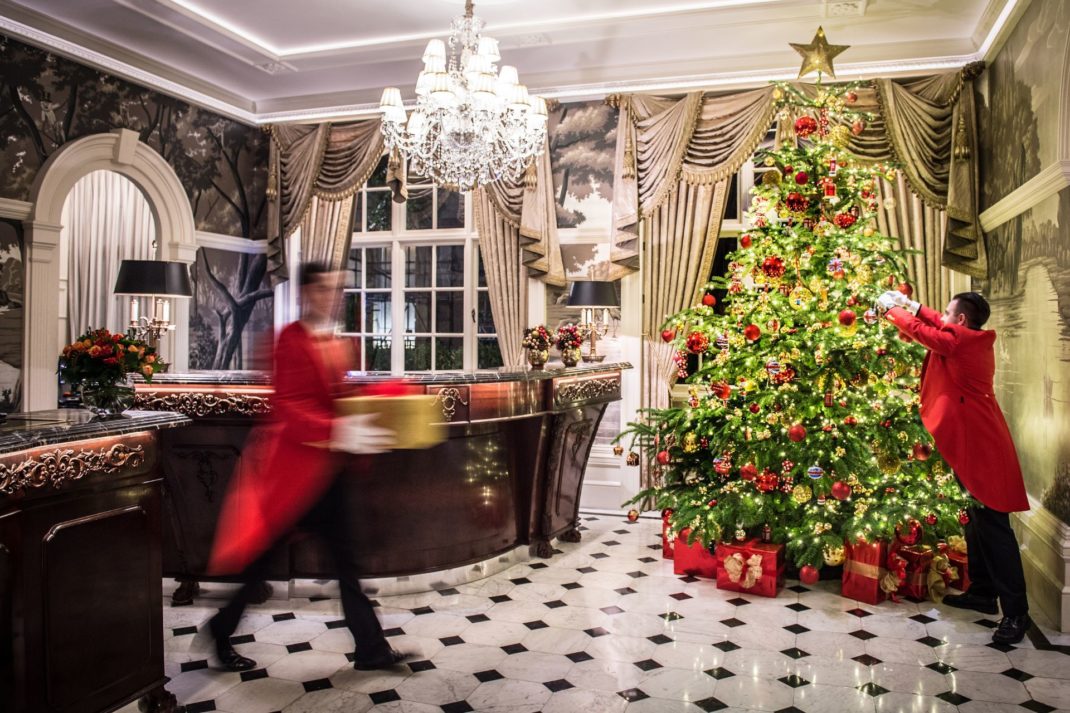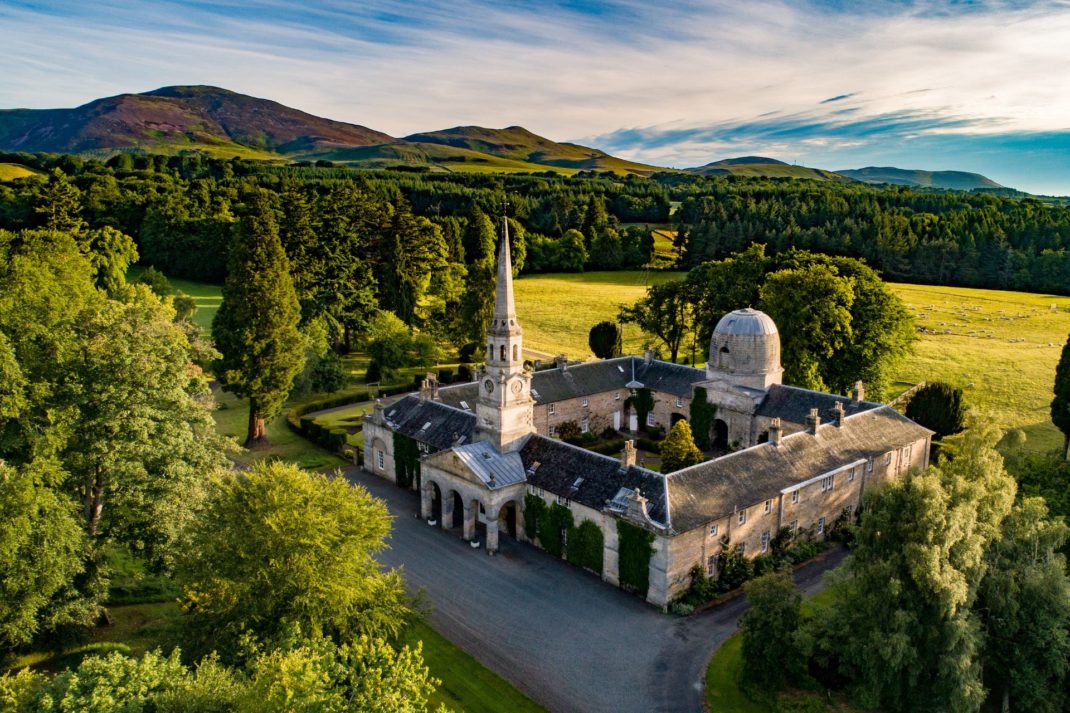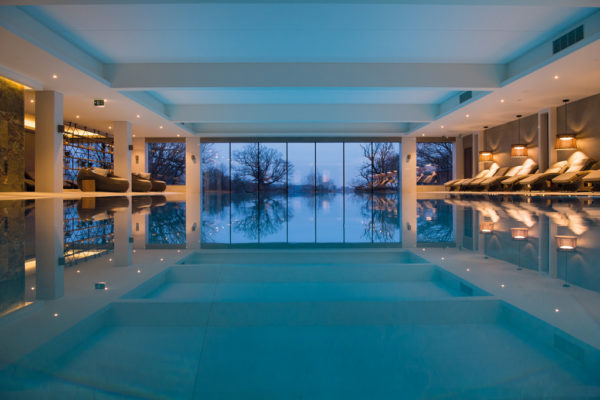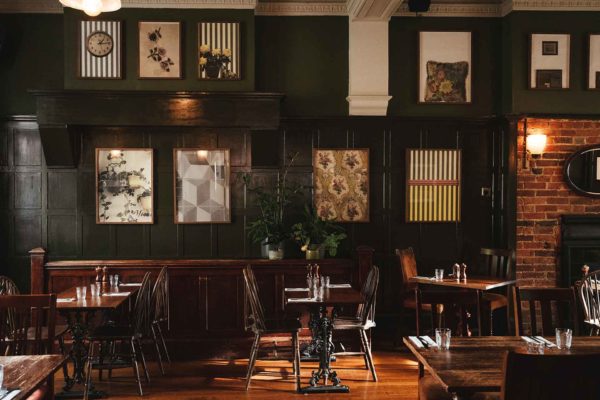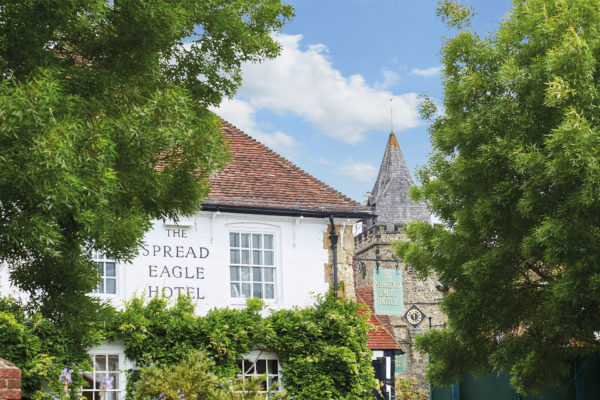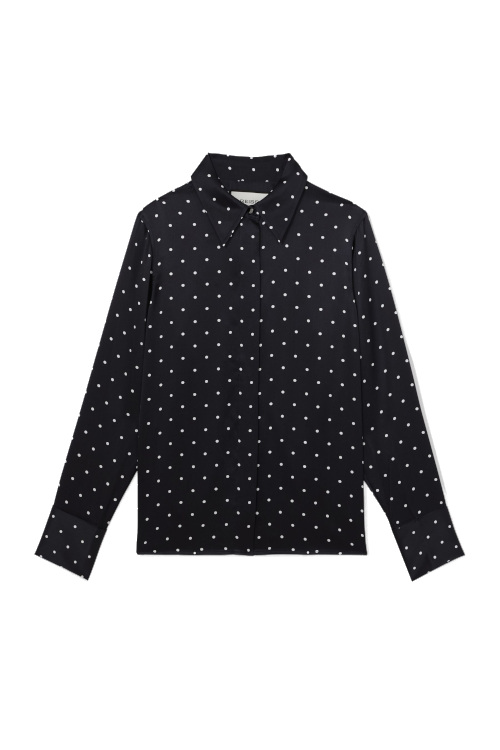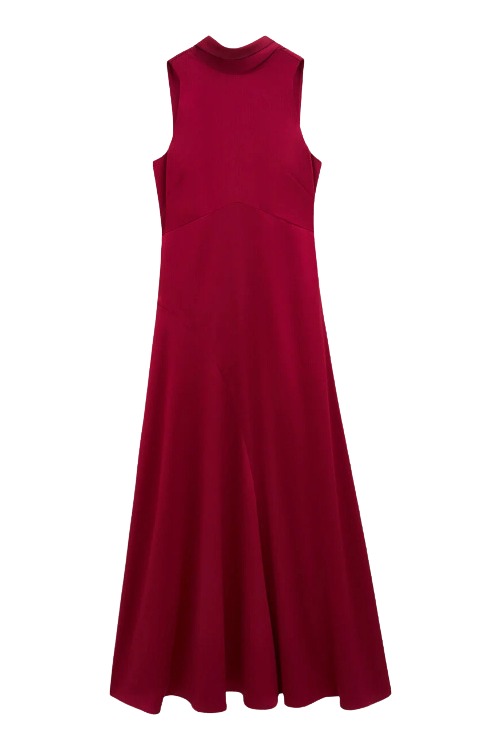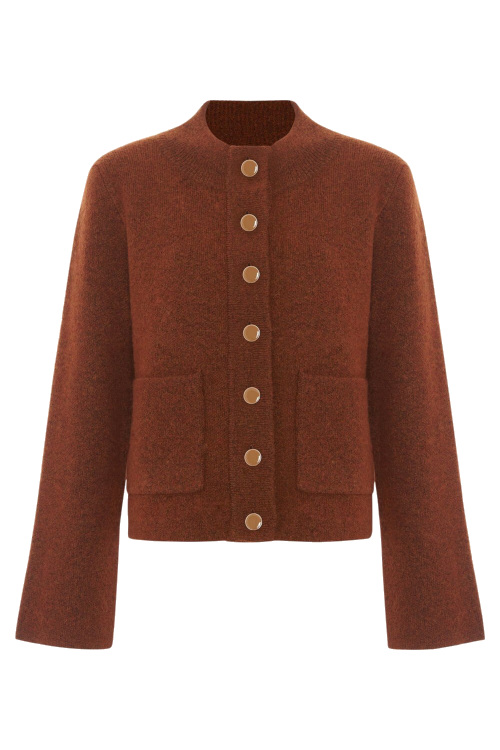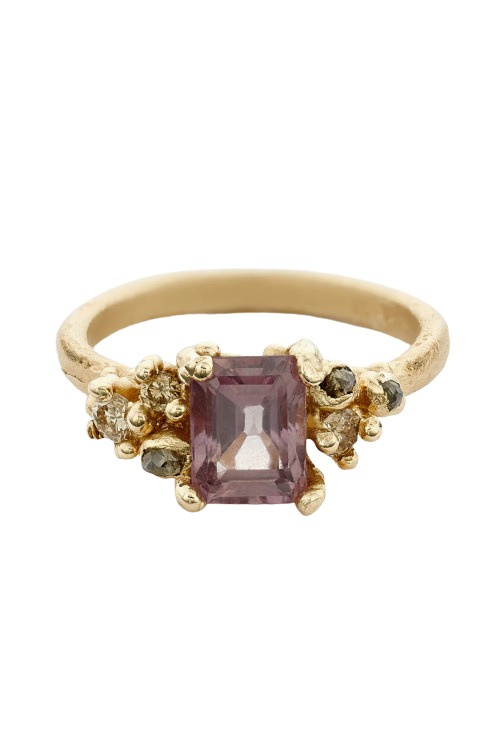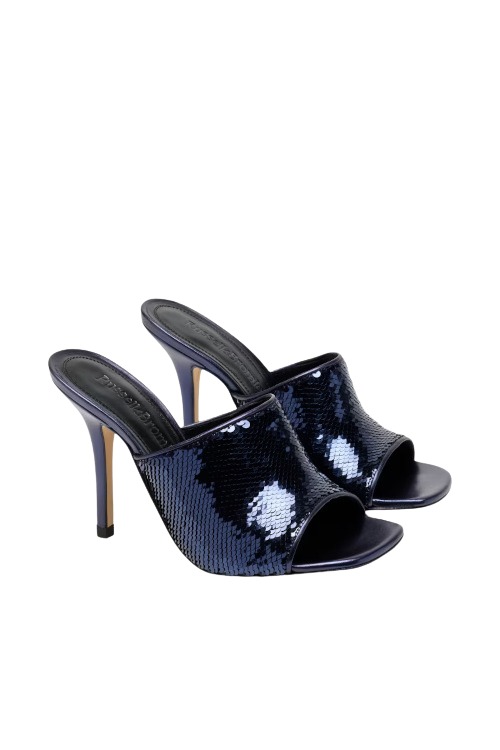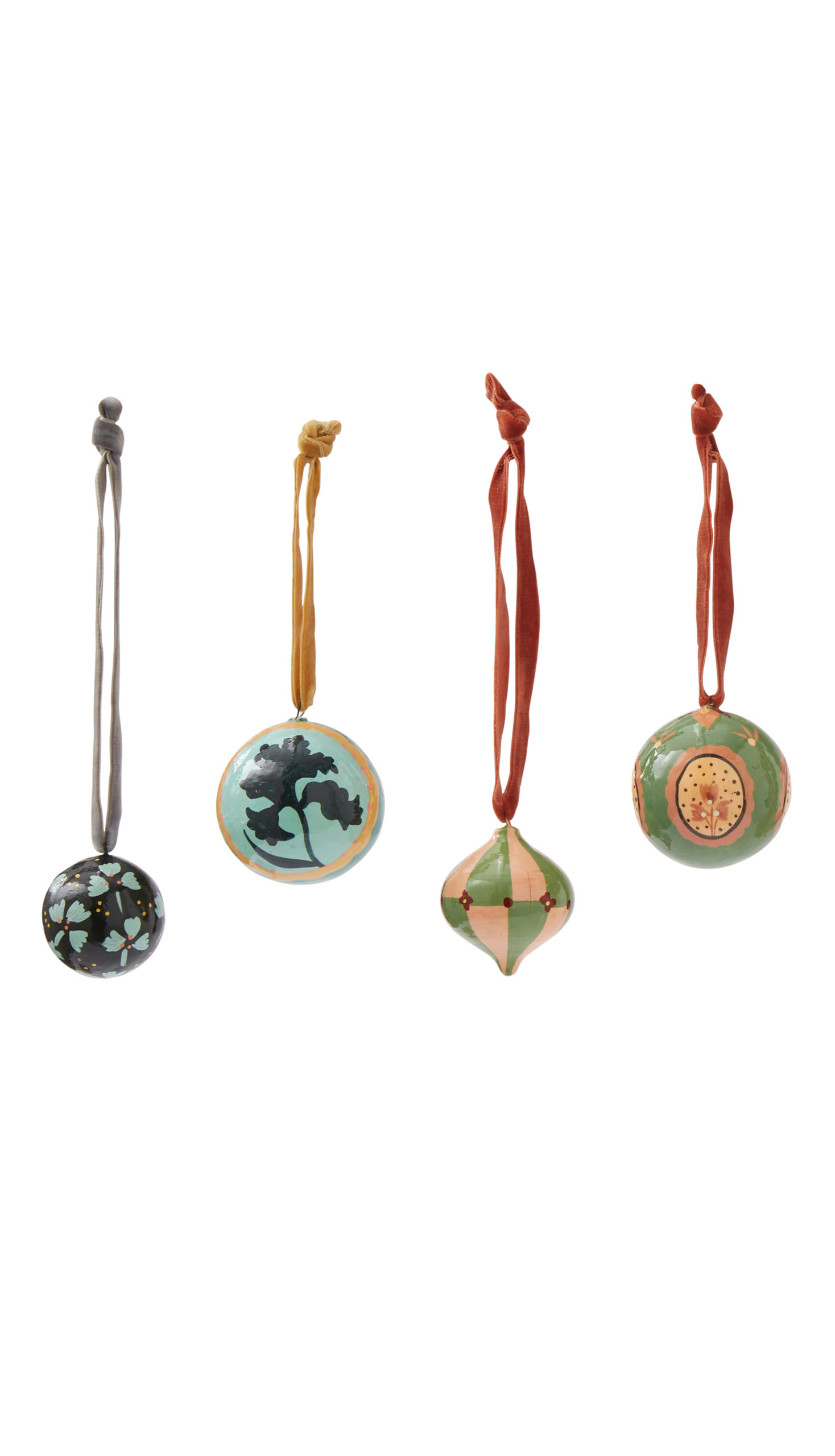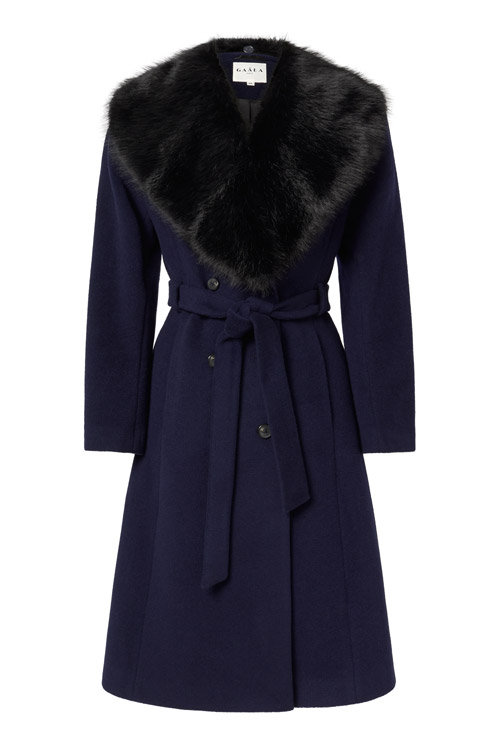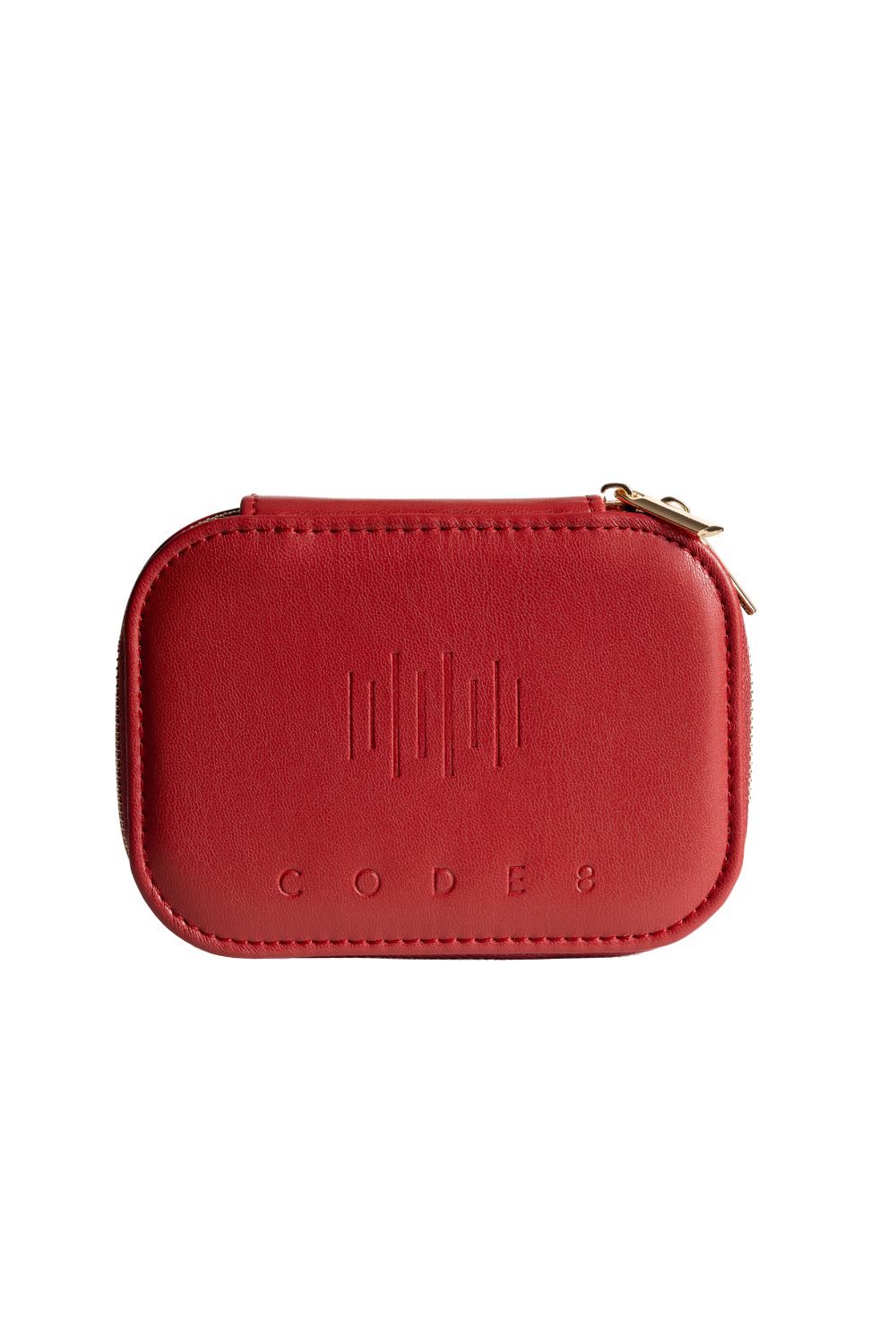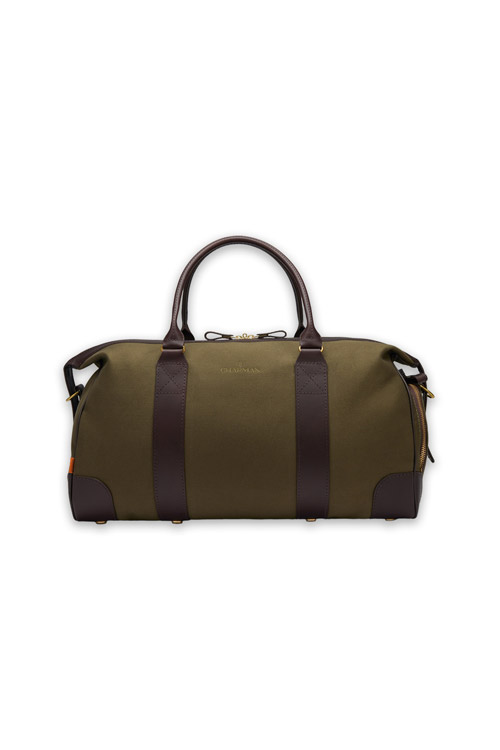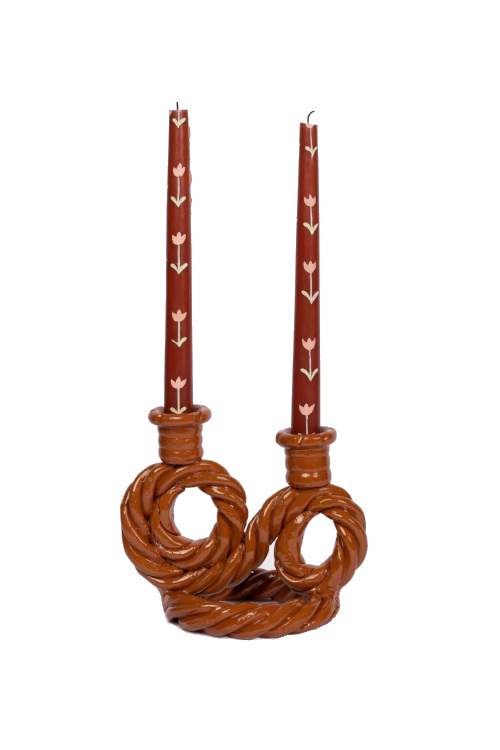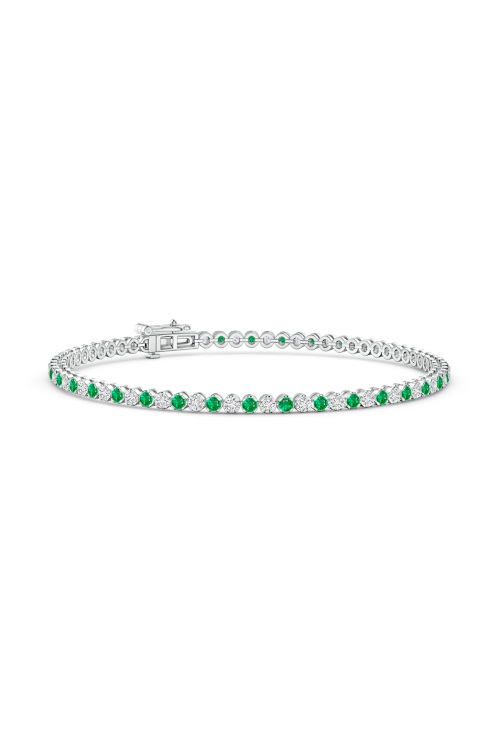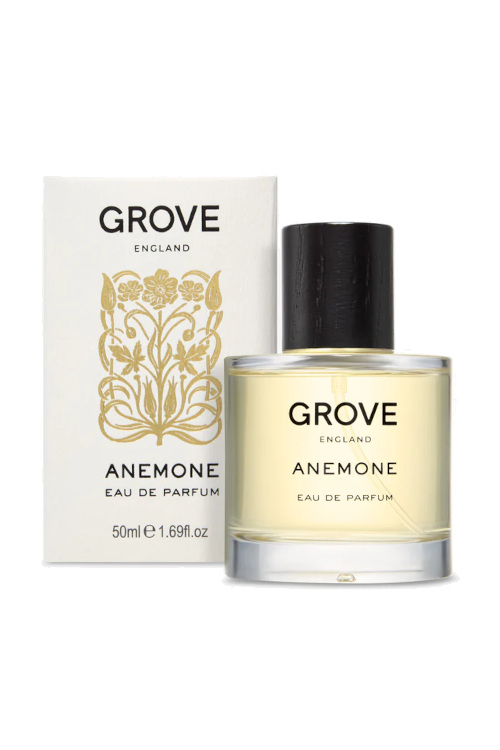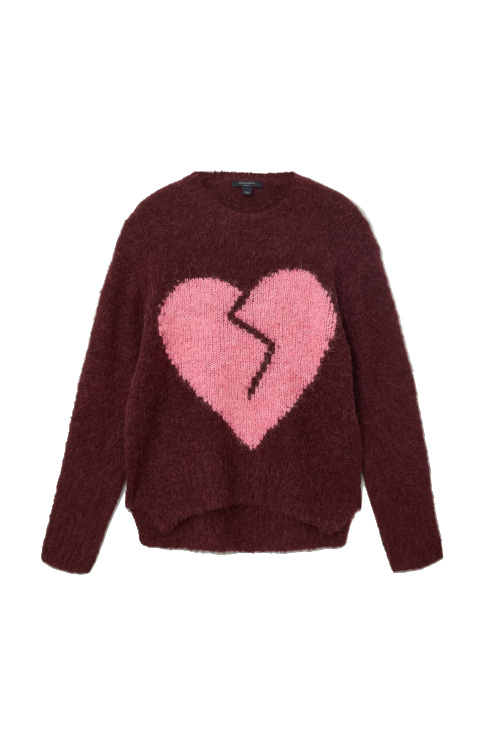A Grand Tour: 48 Hours Of Art And Idling In Sussex
By
5 months ago
Explore the artistic history of Sussex through its villages, bookshops and antique stores
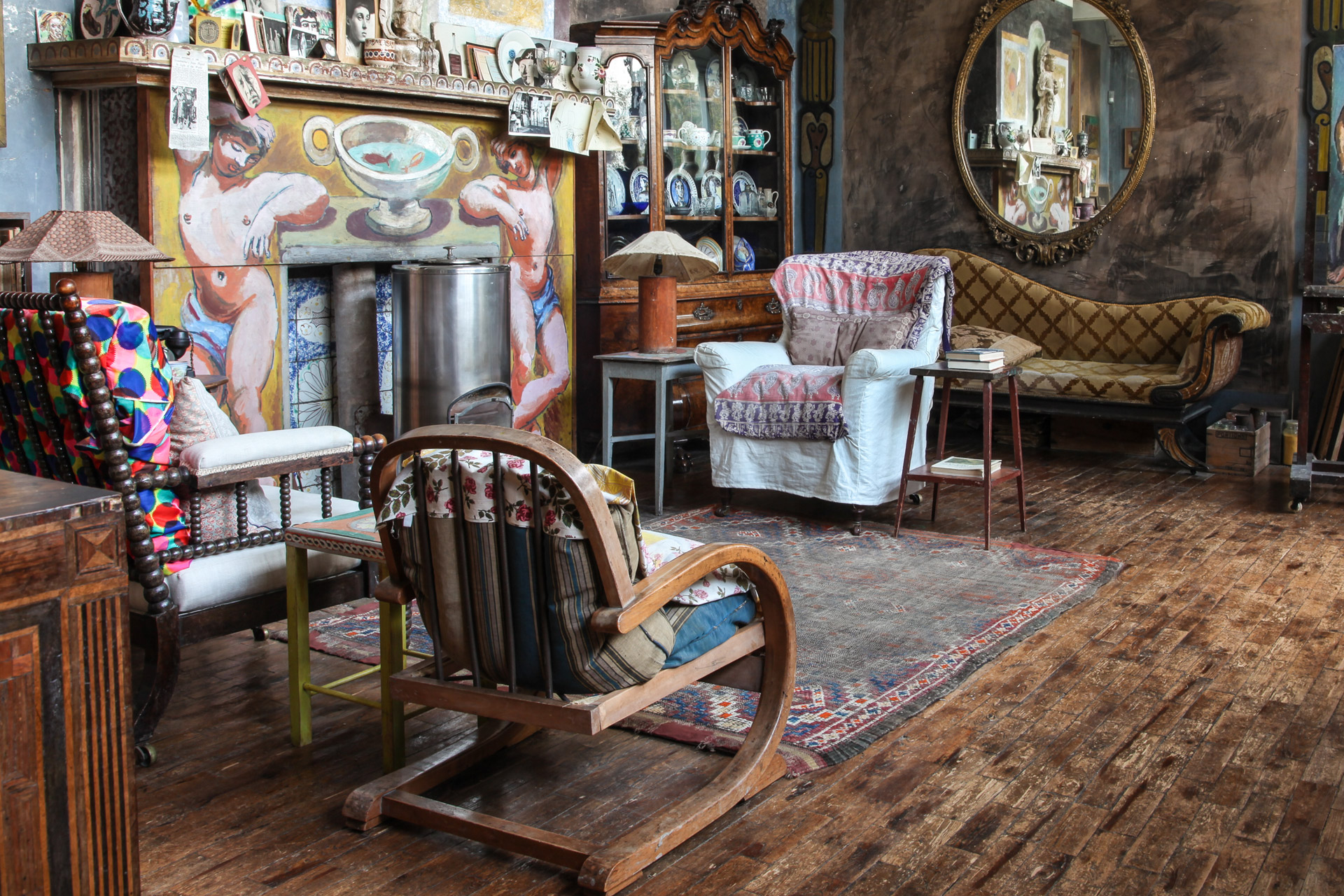
Katie Scott delves into the fascinating past of Sussex, from Alfriston to Glynde, staying at the Polizzi-designed hotel The Star along the way
Sussex: The Art Weekender
The light catches the thin gold thread that weaves across the paper as Nash turns the page. He is showing me a book that Sara, who works in the shop, has made inspired by the fairy tale, Rumpelstiltskin.
Perhaps embarrassed by the praise, she quietly shows me the patterned papers she layered to make a forest from which a dragon might stomp if this was a different tale. The papers are sold in packs alongside buttons and ribbons; notebooks made with book covers rescued before the dump and ‘bit bags’, filled with photos, vintage cards, antique maps, old prints, advertisements, illustrations, stamps, cigarette cards and pages from damaged books among other found things to delight and inspire.
Nash and his partner, Cate, have owned Much Ado Books in Alfriston, East Sussex, for years. It is a place of wonder. As well as the shop’s many beautiful tomes, there are cabinets of curiosities to look into, filled with a curated selection of the couples’ book art. Inside are miniscule bibles thumbed through in a more pious age and tunnel books, which lead the eye through wispy paper trees in which delicate paper fauns hide. There is so much to look at on the staircase that I hover on every step. Finally upstairs, I find a commission by artist Su Blackwell. It is a model of the shop itself with a book cover as the roof. Inside, there are outlines of people bustling about their day – perhaps Cate rearranging the craft table or Nash leafing through the scrapbook of reviews and notes that they leave out for visitors to add to. This is a place where you can browse and buy, but also stay a while to create.
I wander across the road, drawn by the light catching a magnificent robe in a shop window. In the courtyard, William Emmett quietly sews in a pool of sunlight. Gold thread again catches my eye. Inside the shop hang dresses that are art forms in themselves. William explains he has a loyal clientele. They know what they want – and know he will find garments that deliver panache and artistry.
He and his partner, Nicholas White, own both an antiques shop and The Dressing Room – an independent vintage clothing shop. They drove through the village many years ago and decided it was the place for them. ‘That’s what seems to happen here,’ explains Amanda Lawrence, owner of Objet Trouvé. We sit in her shop, watched intently by an intricate paper owl. Each feather is individually cut out and fluffed up as if the bird has just finished preening himself. In the lockdown, Amanda turned the entire shop window into a fantastical paper forest. This was in between sessions hand-painting the floor of the dining room and The Pilgrim’s Room in The Star hotel, which is just a few doors away.
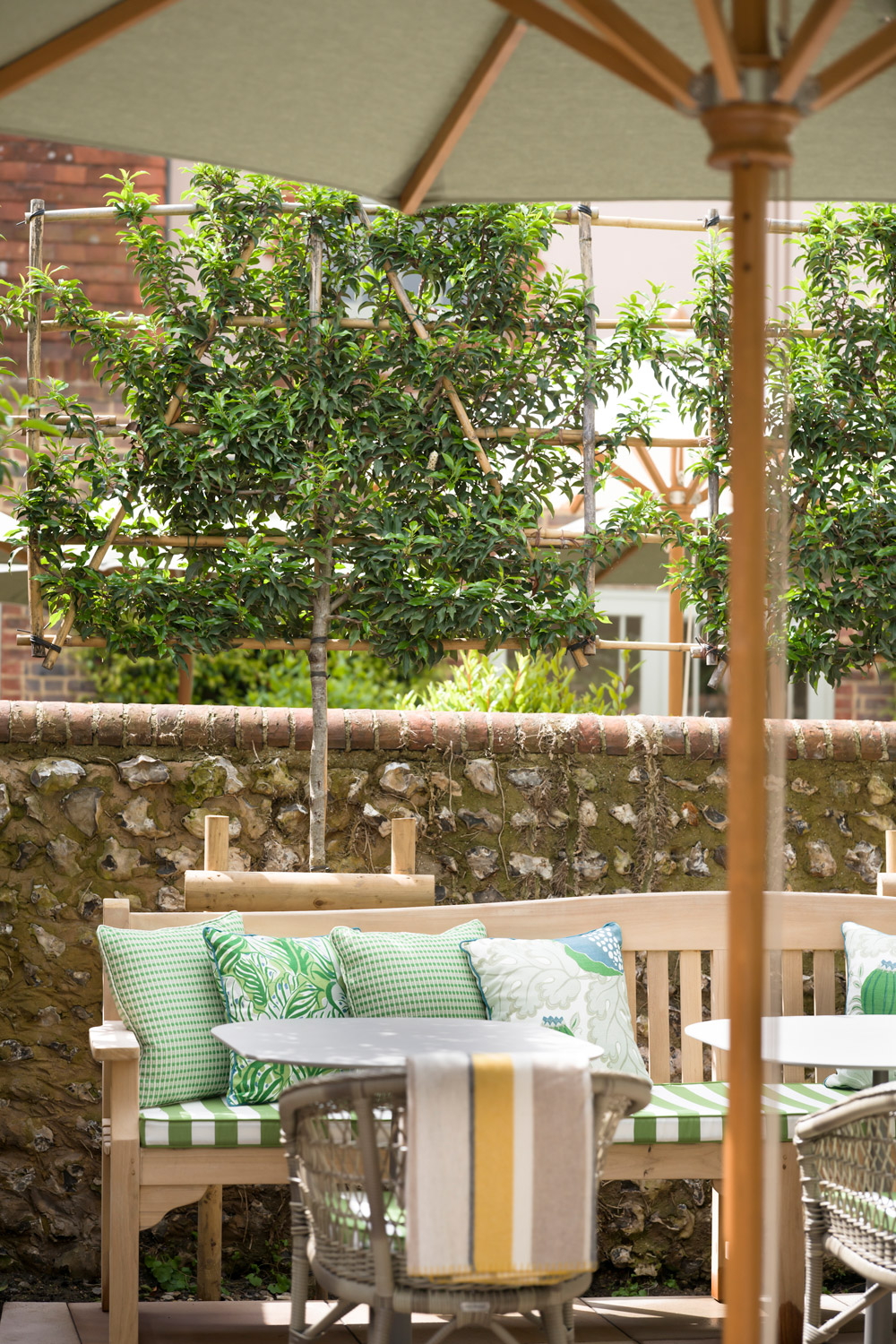
(c) Paul Massey
The Star Hotel, Alfriston
The building was being renovated by mother and daughter hoteliers, Olga and Alex Polizzi, at the time. Amanda worked around the builders. ‘We had a disco to keep us warm while we worked,’ she shares. She had never painted a floor before but Olga had faith in her. She has a good eye for talent. In The Star, we stayed in The Olga Suite, in which the selection of books was so tempting that I almost eschewed dinner. Bought from Much Ado, I am told, where both Polizzi’s are regular customers.
Individually designed by Olga herself, the room has a gentle but confident artistry to it. It feels curated but with ease. You don’t feel scared to knock off your shoes and snuggle into the pillows.
Downstairs, in the library, books on the Bloomsbury Group and Eric Ravilious give an introduction to two of the county’s most famous bohemian groups; and set me up for the afternoon’s adventure. Olga tells me that she is drawn to works that ‘give our guests a sense of place. Guests that come here want to get to know the area and are interested in the churches and the places of local interest like Charleston or Glyndebourne.’ She adds: ‘The Bloomsbury crowd are of endless fascination.’ There is also a large dose of fun and whimsy to the curation. A bird’s nest catches my eye as I head to the door. It’s perched upon a statue – a bucolic headpiece with pottery baby birds nestled inside, waiting for a clay worm.

Inside the Sussex Modernism exhibition, which runs until 28th September 2025, (c) Rob Harris
A twenty minute drive away, across The South Downs and tracing the coast, is Towner Eastbourne. This jewel box of a gallery stands out among white-painted Victorian terraces with its dramatic painted exterior. From the outside deck of Light restaurant, I can see spires and the lawn of a bowls club beyond the flashes of colour. I can’t see the sea, but it’s just a five minute walk away and the seagulls are calling, perhaps announcing the arrival of my sandwich.
It opened in 1923, following the death of Alderman John Towner who left 22 paintings and £6,000 for the establishment of an art gallery with a focus on Sussex landscapes. It now houses more than 5000 works, including works by Eric Ravilious, Duncan Grant, Sandra Blow, Alfred Wallis and Tacita Dean.
Inside, curator Hope Wolf is standing over a curtain sample designed in 1951 for the Royal Festival Hall. A loan from the Ditchling Museum of Art + Craft – a place on my list for another trip – it is waiting to be placed on the wall. We step around as Hope continues my tour of the Sussex Modernism exhibition, which is opening in just a few days. I spot a Vanessa Bell painting of Arum lilies in a vase beyond boxes, paint pots and ladders. It was painted in 1919, a year after the end of a war that had seen her and her sometimes lover, Duncan Bell, leave London. He found work on a farm as a conscientious objector and they found a home at Charleston, a farmhouse stumbled upon by Bell’s sister, novelist Virginia Woolf.
A painting by Gluck – born Hannah Gluckstein – catches my eye, not least for its beautifully simple framing and the white painted box in which it is mounted; on walls otherwise saturated with colour. It is a traditional landscape – a view down the River Ouse – which Towner will no doubt have approved of. In her book about the exhibition, Hope writes though that Gluck ‘smuggled subversive content into her representations of Christian places…’ She was a gay woman, often wearing masculine attire, who found a degree of creative and domestic freedom in Sussex – though there was also friction.
The Bloomsbury group too created a haven at Charleston where they lived their tangled lives. I arrive after a beautiful dinner, superb night’s sleep and a moreish breakfast at The Star. The hotel’s courtyard beckoned with dappled light and I sneaked a quick sit down with my cup of tea before begrudgingly leaving.
Charleston
As I pull into Charleston, the domesticity of the scene surprises me. It is a pretty building with flowers blooming from its walls but it isn’t grand. I can hear cows mooing. You can imagine muddy boots piled by the door and people lounging on the lawn. Inside though, every surface is painted or adorned. Art is everywhere.
From the paintings – including works by the French Impressionists nearly every art student could name – to works by the group themselves. They drew each other and their friends – their styles changing, reflecting what they saw on frequent trips to Paris. During one such trip, economist John Maynard Keynes brought a Paul Cézanne painting. Back at home and trying to navigate the lane to the house with arms full of luggage, he stuck the painting in a hedge row. It was later rescued in a panic and now has its own wall in an exhibition at the house.
This very lane may well have been used by Ravilious when he travelled to Furlongs – another artistic, but perhaps more modest haven run by the very generous Peggy Angus. He would have strolled past Charleston but the two groups never mingled. It may have been a question of social standing, suggests Hope. It is extraordinary, though, to think of two such rich creative hubs within just miles of each other.
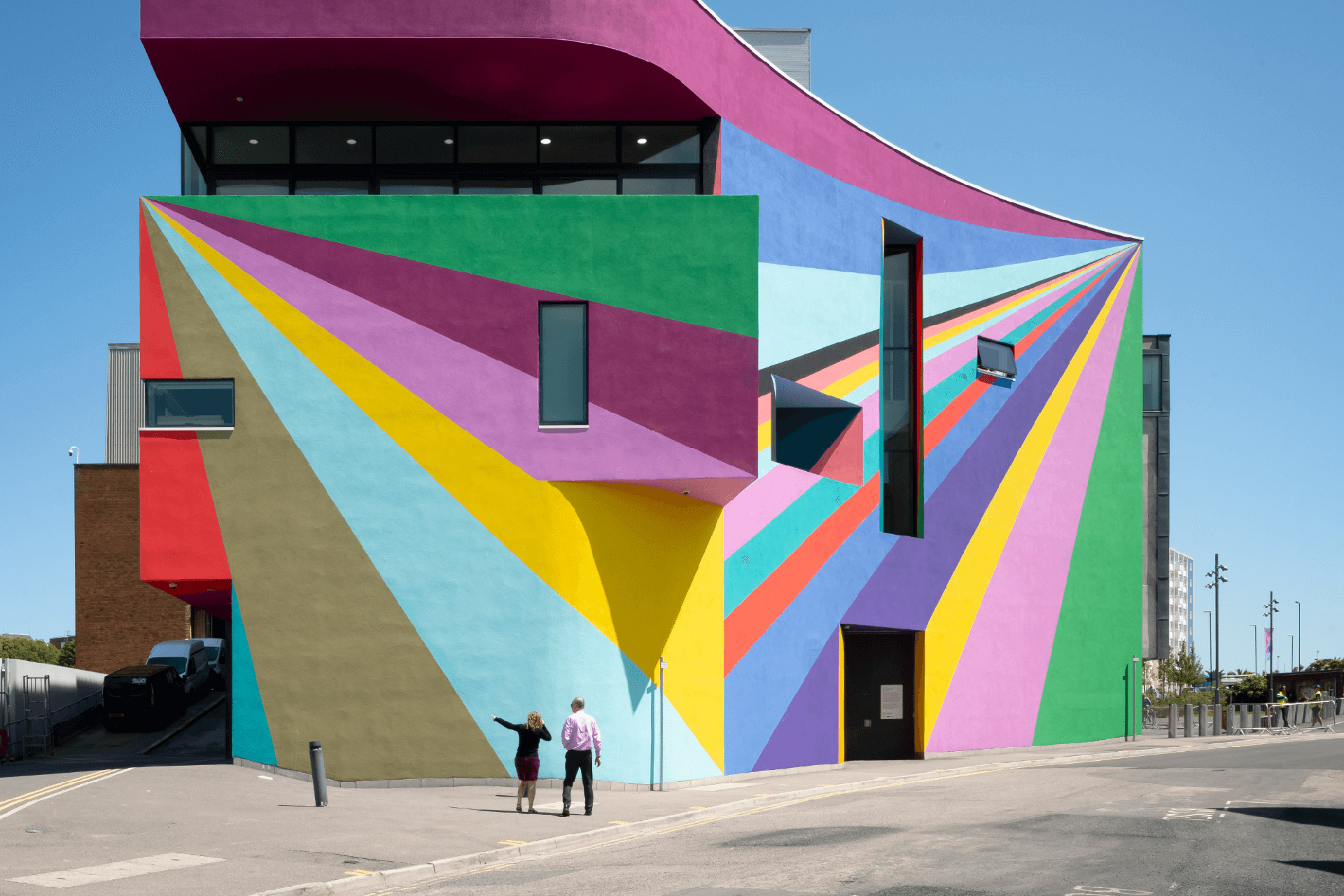
Lothar Götz, Dance Diagonal, Towner Eastbourne, 2019. Photo by Jim Stephenson.
Firle
Next is a visit to Firle, where Vanessa Bell, Duncan Grant, and Vanessa’s son Quentin Bell are buried in the churchyard. I stop at The Ram Inn for lunch in the courtyard. This brick and flint building is dark and enticing inside with open fires and the memory of decades of conversations. The pub sits in the Firle Estate, and the manor house has a vast art collection. The 7th Viscount sat for Duncan Bell.
On next to Glynde – a hamlet that nestles at the base of Mount Caburn – to visit Blacksmith artist, Thomas Gontar. The Forge is a beautiful building with a horseshoe-shaped door that wouldn’t look out of place in The Hobbit. The village is a quiet place with roses tumbling over flint walls and an Elizabethan manor house.
Thomas can trace back the history of his craft in the village to the 1740s. He took it over in 2016 and says he has been busy every day since. Inside, Thomas’ apprentice is making rose petals from copper. Among the forge’s clients are the Polizzi’s for whom Thomas has crafted everything from tables to light stands. They value craftsmanship but also uniqueness, and have found people around The Star who can deliver both.
In fact, art seems to be ingrained into the lives of these little Sussex villages but also in the county’s towns – Brighton, Eastbourne and of course, Bexhill-on-Sea – home to the Modernist De La Warr Pavilion. It is imprinted even on the land itself – like Chris Drury’s Fingermaze in Hove Park or The Long Man of Wilmington – both etched into the chalk. I left feeling I had so much deeper to dig into Sussex’s artistic heritage. That – and the fact that there were at least five other dishes I wanted to try at The Star.


